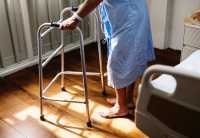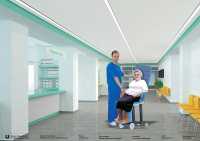MedicalResearch.com Interview with:
Anat Mirelman, PhD
Director- Laboratory of Early Markers of Neurodegeneration (LEMON)
Center for the study of Movement , Cognition and Mobility (CMCM)
Department of Neurology
Tel Aviv Sourasky Medical Center
Sackler School of Medicine, Tel Aviv University
Tel Aviv 64239, Israel
MedicalResearch.com: What is the background for this study? What are the main findings?
Response: The main aim of this research was to evaluate the efficacy of using a motor cognitive training using virtual reality in reducing fall frequency and fall risk in older adults.
Falls are a leading cause of morbidity and mortality in older adults. The prevalence of falls is huge, with one out of every 3 adults aged 65 years or older will fall at least once per year, with approximately half of these fallers suffering multiple falls in this period . These statistics are even higher in neurodegenerative conditions such as in Parkinson’s disease and in people with cognitive impairments. For example, studies have shown that as much as 80% of people with Parkinson’s disease fall each year. So many older adults are falling.
The consequences of falls are huge.
The most dramatic result is hip fracture. But this is relatively rare. However, even in the absence of a fracture or other injury, falls often lead to fear of falling, social isolation, and depression, which in turn often leads to inactivity, muscle weakness, impaired balance and gait, more falls, more social isolation. In other words, falls often start a vicious cycle, which has many important negative health consequences. Falls are associated with morbidity and mortality and they also have a huge economic impact. In many western countries, 1-2% of healthcare dollars are spent on falls.
For many years, age-associated changes in muscle strength, balance and gait were viewed as the key factors that contribute to the risk of falls. However, more recently, we and others showed that certain aspects of cognition are also critical to safe ambulation. For example people with AD often fall, almost to the same amount as people with PD, highlighting the cognitive component of falls. This makes sense intuitively if we Imagine the cognitive skills we need just to cross a busy intersection. These tasks require executive function, specially, planning, the ability to avoid obstacles, and the ability to perform two or more tasks at the same time.
(more…)












